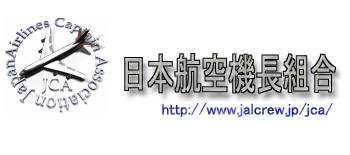Skip to contentJFU
- INTENSE ARGUMENTS IN THE UNITED STATES TEROUGtI THE 70s OVER TEE CREW COMPLEMENT ISSUE
In 1967 the airworthiness certificate for the two man B-737 was acquired. In the following year, evaluation tests were conducted on a wide scale to determine whether to implement the two man crew complement with which the airworthiness certificate was acquired or to use the three man crew configuration as advocated by airline flight crew.
The Federal Arbitration Commission assessed that it was possible to fly with two men but that implementation of the three man cockpit would contribute to safety in the early stages of introduction. United Airlines therefore started operation of the B-737 in 1970 with three men.
This fact greatly influenced Western Airlines and others; with Western, Wein and Frontier making the decision to ny this aircraft with three men.
In 1971, the crew complement issue of the B-737 was discussed at Aloha Airlines.
The Federal Arbitration Commission officer who dealt with the arguments between Aloha and US ALPA assessed that it was possible to operate the aircraft in Hawaii with two men due to the traffic volume and weather conditions there. He nevertheless supported the three crew configuration for B-737 operation in places in the United States other than Hawaii.
In 1973, US ALPA confronted the management of Wein Airlines, which was trying to replace the three man crew of the B-737 with two men. The Federal Arbitration officer at that time judged and approved the implementing of the three man crew complement. The examples of United and Aloha were referred to, concluding that the flight conditions were most similar to that of United.
In 1976, pilots at Frontier Airlines, after conducting three man operation of the B-737 for six years, accepted the two man crew complement proposal of management. Wein airmen went on strike when the company management tried to forcibly implement the two man crew on their B-737.
In answer to the continued strike on the crew complement issue of the B-737, in 1979 the President’s Energy Commission set up by President Carter, instructed Wein to operate their B-737 with two crew members. The pilots at Wein were made to accept this leaving United as the only airline operating the B-737 with three men.
Airmen in the United States have consistently fought the crew complement problem in the 1970s within the social environment dominated by the petroleum crisis and deregulation. Arguments regarding the two man crew complement further intensified during the acquisition of the airworthiness certification of the DC-9-80 and at the announcement that the B-757 and B-767 were being developed with a two man crew.
Previous Post
「沈まぬ太陽」乗員版・解雇編


